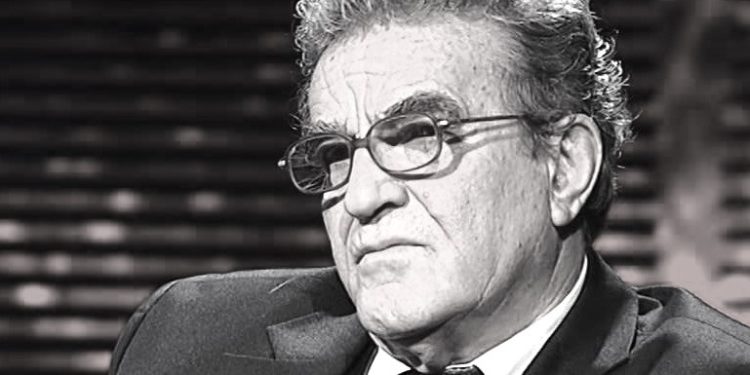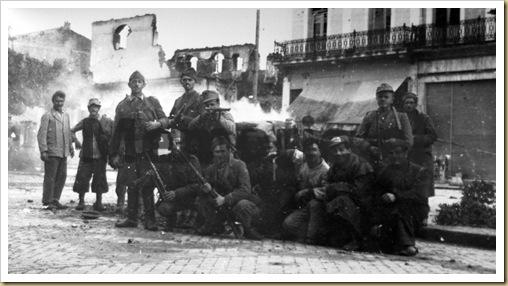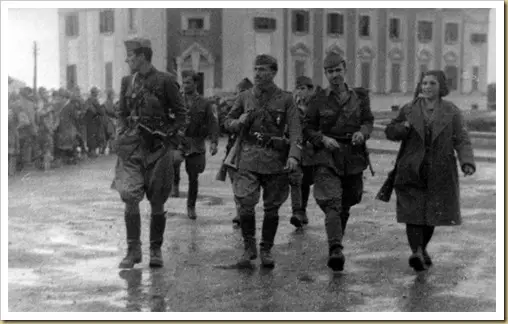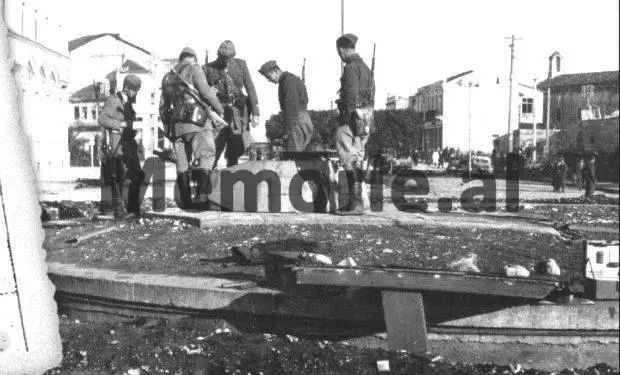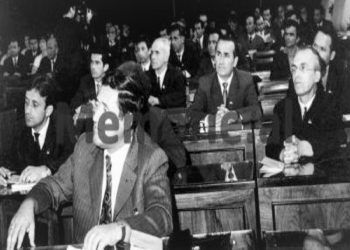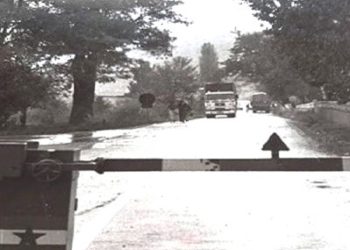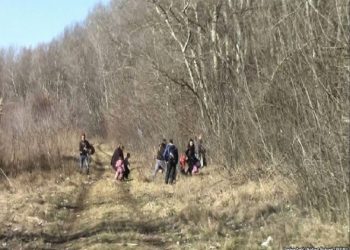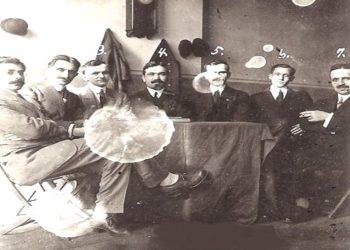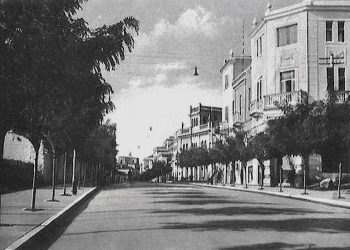By Dr. Uran Butka
Memorie.al / The German armies, which had received the final blows on the Eastern and Western fronts from the Allies, were retreating defeated towards Berlin. On October 3, 1944, the order was given by the Wehrmacht to withdraw from Greece, Albania and Macedonia. (Archive of the Armed Forces, German documents). On November 2, 1944, the German armies left Greece. On the way north, Tirana constituted an important node for the German army in their withdrawal from the Balkans. According to German documents, the evacuation from Tirana was carried out 10 days later than planned, due to the blockade and the fight by the forces of the National Liberation Army brigades.
During this war, 124 partisan martyrs fought and gave their lives. But this war, which delayed the liberation of the capital for 10 days, as well as causing the fall of these martyrs and hundreds of other victims, which could have been avoided, was unnecessary, as the German army was retreating, according to a declared plan. Of course, ordinary partisans, sons of the people fighting for freedom, and none of the communist leaders were killed. This is one side of the coin, the seizure of power by them as soon as possible and at any cost. “Whoever takes the capital, takes power” – Enver Hoxha instructed.
The other side was that of the war to annihilate the “reaction”, the real or potential political opponent, which caused illegal, massive and ugly massacres and murders in Tirana…! “Terrorism in the party, in the people, in the army,” testifies Sejfulla Malëshova, – first shows the weakness of our political line; second, the distrust we have in the people; the third that we have no connection with the masses. We solved everything with terror. I was not surprised when they told me that the more terrorist a person was, the more communist he was. This is what the symptoms of degeneration look like, from a political party, into a gang of criminals”! (AQSH, Fondi 14, D.2/a, Year 1944)
“Many people have been killed without trial and without guilt…! Dushan Mugosha introduced this spirit. So today the army seems to have set out to kill the people. The partisans kill themselves, without even putting people before the court”, says Tuk Jakova. (AQSH, Fondi 14/AP d.2/a Year 1944)
…One of the most savage supporters and organizers of this genocide, Kristo Themelko, an agent of the Yugoslavs with the Slavic nickname “Shulja”, says: “This terrorist path of ours was born as a line…! From this it follows that all those elements who are against us, but for whom there are no facts, should be shot right now…! Instead of purging them during the war, they should be purged in a way that would not be understood by the people…! Those who surrendered were also killed”! (AQSH, Fondi 14, D. 2/Av. Viti 1944)
Of course, this genocide was not sporadic, but organized and was led by the terrorist leader Enver Hoxha. “When I talked to Enver,” Kristo Themelko claimed, “he advised me that when we entered the city, we should purge the dangerous elements. Therefore, when I entered Tirana, I asked the organization for a list of these elements”! (AQSH, Fondi 14 Dosja 2/a, Viti 1944)
About the massacres, the secretary of the Tirana Communist Party’s district, Gogo Nushi, states with his own mouth in his reports to Enver Hoxha: “We have seen this terrorist spirit in recent days in Tirana. This shows our line. With the entry of our forces, 60 people were killed. We have the list. I think that none of them deserved this punishment. We are sure that there will be others. The number will have exceeded 100”! (AQSH, Fondi 14, Dosja. 2/a Viti 1944)
…The curtain of the mass massacre opens on the night of October 28, 1944, when the communist forces that were underground, or that had penetrated Tirana in those days, instead of striking the German invaders, secretly entered Tirana houses at night and arrested or shot the citizens, who had been marked on the death lists by their leaders. This is what they did at midnight at the house of Ymer Dërhemi and arrested Akil Sakiqi, Nazmi Uruçi and Fahri Dabullë. “They want you for an explanation”. But they shot them that same night.
Akil Sakiqi was from Dibra e Madhe. His patriotic family, pursued by the Serbo-Macedonian genocide, moved to Turkey, then settled in Tirana. Akili, after graduating from the Korça Lyceum, graduated from the Military Academy in Rome, the branch of the Finance Guard. He served with devotion in Durrës, Shkodër, etc., always in the background. On April 7, 1939, he fought together with Abaz Kupi and Myftar Jegeni and many other officers of the National Army, against the Italian aggression.
Nazmi Uruçi from Dibra e Madhe was also from a patriotic family. Fahri Dabulla from Gjirokastra. Akili, Nazmiu and Fahriu, all three well-known career officers, ardent patriots, honest and unblemished Albanians, had graduated from the Korça Lyceum together with Enver Hoxha. The terrorist Hoxha put his high school friends on the death lists. Insatiable with their deaths, he mentions them with pathological hatred and without any sign of remorse even after several decades, in his books, when he tries to falsify history.
“Just before the plenum, Sejfulla Malëshova comes to me all ‘alarmed’! – There is a lot of terror, – she tells me with all her anger. – Terror? – I asked her in surprise. – Where? – In Tirana, – she answers me. – Many repentant officers are being killed. – In Tirana, the great war for the liberation of the capital continues, – I said. – Who are you calling terror? And which officers are you complaining about”?!
What hypocrisy?! It is known that at the Berat plenum (November 24-27, 1944) before the envoy of the Yugoslav Communist Party, Velimir Stoinic, Enver Hoxha admitted with great humility: “Dozens of second-rate people and officers are being killed in Tirana who, having full faith in justice and in our proclamation, surrender. Such work is not occasional, but is the entire tone that has been given to the organizational work of the party and the army. Our comrades only think of eliminating anyone who is not with us, who does not think like us, to eliminate even ordinary people” (AQSH. Berat Plenum, November 1944)
One of those missing soldiers, not second-rate, as Enver Hoxha says, but soldiers of high caliber, like Rakip Kalenja, from Mallakastra, who graduated brilliantly at the Turin Military Academy, engineering branch. He helped build roads and other important works. A nationalist officer, he welcomed the Italian invaders in Durrës with a rifle. In November 1944, after the call that had been addressed to all military personnel, he went to join the partisan forces of the First Assault Brigade, but was betrayed by traitors and shot.
The night of October 28 was designated by the Communist Party District for Tirana as the night of the murders of career military personnel. That night, the following were shot: Hamit Greblleshi, from an autochthonous Tirana family, a teacher and later, after graduating from the Military Academy in Istanbul, an officer of the Albanian state gendarmerie, until 1939, when he was released for health reasons…! Hamit Greblleshi was arrested along with other officers who lived on Tabak Street, Hasan Dinen from Maqellara in Peshkopia, with a military academy completed in Italy, a patriot son of a patriot, Azis Blloshmi, from the well-known Blloshmi family of Bërzeshtë, who had completed military studies in Vienna, Faik Shkupi, an Albanian from Skopje, graduated as a military officer in Italy and who served in Albania, Mehmet Dadon and Boris Belevski, officers in the Albanian army, Aleks Mavraqi, Selman Shtjefni, Bajram Cuka and others, whose graves are not even known.
One of those dozens missing is also Major Muharrem Liku, a devout son of Tirana. Educated in Istanbul and inspired by the Renaissance, especially by his brother-in-law, Halit Bey Bërzeshta, a soldier of the Albanian state, he served his homeland and King Zog faithfully. That is why he was put on the death lists. On November 1, 1944, at 3 am, there was a knock on the door of the house. The killers were looking for Muharrem. He left the house because he felt innocent. At the door he saw armed men and another officer of the National Army, who had studied in Europe, Abdulla Saraçi, arrested.
The two of them accompanied them somewhere, maybe nowhere. They only spent a few minutes on the road when the machine gun went off. First Abdullai fell, after him the bullets pierced Muharrem. The bodies were put in an ice cream cart. The rare passersby saw at dawn a cart from which a bloody hand was hanging. Then two more hands. So there were two bodies. The relatives found them, took out their decomposed bodies and buried them at the Tomb of Bam. One finger of Abdullai’s hand was cut off along with his gold ring.
That same night, the terrorists arrested and killed the soldier with the rank of captain, Anton Fekeçi, born in Graz, Austria, but who lived and served in Albania, since his mother, Gjystina, was from Shkodra from the famous Bumçi family. Antoni was a model officer with Western training and very skilled professionally. He helped modernize the Albanian army. At midnight on October 30, 1944, they called him home and shot him 100 meters away. Then they returned again, took the family out into the street, because they needed the house, just as they needed the furniture, the typewriter, etc.
The genocide for political reasons continued with intensity in and around Tirana. On November 3, 1944, communist forces shot without trial in Sharra, Tirana, the three prominent Deliallis of Shijak: Kapllan Deliallis, Shijak’s deputy in the Albanian parliament, and his brother, Jakup Deliallis, former mayor of the municipalities of Shënavlash and Luz, both sons of a large family. The father, Dalip Deliallisi, was the first commander of the Albanian gendarmerie immediately after the declaration of Independence, December 1912, while his brother, Masari, accompanied Ismail Qemali to Vlora, when the flag was raised and later, commander of the Albanian gendarmerie. Along with them, Shefqet Deliallisi, the son of the well-known patriot, Ymer Deliallisi, was also shot. Shefqet, a young officer, graduated from the Military Academy in Rome, but who received the fascist occupation with indignation and resigned from his post, because he was against the invaders, just as the Deliallisi of Shijak have been for generations.
Along with these martyrs, Isuf Allamani, from the famous Allamani family of Mat, was also shot. What had Isufi done that they killed him? He had studied agronomy at the University of Florence and had returned to Albania to help in the economic renewal of the country. He founded the Xhafzotaj Farm, a modern agricultural and capitalist economy, and was its director when he was arrested and shot without trial, although he had not interfered at all in political affairs.
In Sharra, five other victims were shot without trial and thrown into a stream: Captain Bajram Cuka, Selim Kelmendi, Ndue Pali, Minella Toçi and Selaudin Korça. Selim Kelmendi, from Vuthaj i Gucië, had fled the Serbo-Montenegrin terror with weapons in hand, together with his two brothers, Rustem and Ramë, members of Azem Galica’s platoon, but he could not escape the terror of the Albanian Chetniks.
Selaudin Korça, the son of the great patriot, cleric, philosopher, publicist, poet and well-known anti-communist Hafëz Ali Korça, who was continuing his higher studies in Italy, but who came to Albania, to become a victim of communist terror. On November 10, officer Subi Topulli from the prominent Topullen family of Gjirokastra fell victim to this terror at the Brari Bridge. The murderers massacred him and disappeared every trace of him, opening the word that; he had fled from Albania.
We come to the night of November 12 in Tirana, which is also called the “night of Saint Bartholomew”. That night the greatest massacre took place, a collective punishment and murder without trial, of 11 prominent figures of the Albanian nation and culture.
Ismail Agë Petrela is one of the major figures of Albania, who was shot at midnight on November 12. Why had Ismail Petrela been put on the death lists? Because he was from a large family, he himself was a prominent nationalist, an anti-fascist fighter, a determined democrat, a wise man from Tirana, a well-known intellectual who knew several Western languages, a man of culture, especially of music. Participant in the Peza Conference, in the Mukje Assembly and in the war against the Italian invaders at the head of his unit operating in Central Albania. Here is why the communists killed Ismail Agë Petrela! At the moment of the shooting, he said to the executioners: “Shoot, men die once”!
This time the terrorists chose to massacre the prominent Kokalari family from Gjirokastra. They shot on the night of November 12 in the recesses of the “Bristol” hotel Muntaz, Vesim and Syrja Kokalari. Muntaz and Vesim, pioneers of national education, founders of the publishing house “Mesagjeriti Shqiptare”, which published major works of our and foreign literature, first-class intellectuals, together with their brother, Hamit Kokalari, who wrote the famous book “Kosovo- Cradle of Albanianism” at that time, and their sister Musine, the first Albanian writer, nationalist and prominent democrat, whom the dictatorship later imprisoned and exiled until she died.
On the same day, the communist terrorists shot and Nebil Çika, the philosopher, publicist, great democrat. He was editor and editor-in-chief of many organs of the free Albanian press… and author of the well-known work; The “Albanian identity”, which placed him in the chosen elite of the nation. It was precisely this elite that communism killed.
He attacked the great families that had produced prominent people, to interrupt the tradition, to dry up the source, to fade and subjugate Albania. One of them is the tyrant Lleshi family. All its men were sacrificed for a free Albania, united in its ethnic and democratic lands. Muharrem Lleshi, welcomed the Italian invasion with indignation, while his two sons Sulejmani and Islami, nationalists, were exiled by the Italians in Italy and Porto Romano, later they were fighters of the “Besnik Çano” battalion, which also fought in Kosovo for its liberation.
Sulejmani founded the Gjakova gymnasium and was its first director. At midnight on November 12, armed terrorists entered the yard of the Lleshi family’s house, where anti-fascist or illegal demonstrators were sheltering, and called out the name of Muharrem Lleshi. As soon as he appeared at the doorstep, a volley of machine gun fire left him dead and covered in blood.
The other well-known Tirana family that was hit was the Stërmasi family, which had produced famous people, such as; Xhaferr Stërmasi, flag bearer of Independence. His son, Reshat, completed his higher studies at the Military Academy in Italy and serves in the Albanian National Army. In April 1939, in protest against the Italian occupation, he resigned because he did not want to serve the fascists. He participated in anti-Italian protests and demonstrations. As a pure nationalist, he participated in the ‘Ball Kombëtar’ Organization since 1942 and in 1943, he was appointed commander of the ‘Ball’ Youth of Tirana, which he led in the war against the Italian and German occupiers. That’s why they killed Reshat Stërmasi!
Rifat Tërshana, from Dibra e Madhe, a recruitment officer who served with dedication in Korça, Fier and Durrës, did not escape their “hunt”. Meanwhile, he also helped the National Liberation Movement. But they did not count on him when they shot him on the bloody night of November 12. Terror also massacred ordinary people who were not politically involved. Lluka Xhumari, from the city of Durrës, had completed a technical school in Italy and had become a master in his profession. A man of private initiative, he opened a small workshop, which he expanded into the SAKT automobile company. He was shot in the ruins of the “Bristol” hotel, because he was a man of business, of free initiative, of the market economy, a successful investor, a philanthropist, a man of the future.
Likewise, Ali Panariti, from Korça, a well-known merchant in Tirana and Durrës, later a road construction entrepreneur. The terrorists, led by the secretary of the communist cell R. Dobrolishti, took Ali from his home and shot him without trial, on the banks of the Tirana River, where they found his children, half buried. The epilogue of this fundamentalist terror was the massacre of Jorgji Mema, by a patriotic family from the village of Shtrmen in Elbasan. He had completed the Normal School, but his desire was to serve the Albanian state as a soldier, then as the mayor of the municipalities of Baldushk and Mollas.
Jorgji and the entire Mema clan, thrown into the fight for freedom against foreign invaders, continued the path of nationalism closely linked to the leader of Albanian education and Albanianism, prof. Vasil Andon. Jorgji became the head of the “Ball Kombëtar” of Elbasan and fought against the Italians and Germans, but he also opposed the communism that was occupying Albania. Therefore, he was followed step by step, until he was arrested in Tirana on November 16, 1944 and immediately shot in the alley of the “Kristoforidhi” school. The good people of Tirana buried the martyr Jorgji Mema in the courtyard of this school.
Thus ended this massacre, which bled Tirana, and further the other bloody massacres in Northern Albania, which paved the way for the communist power that bled Albania and the nation for half a century. Memorie.al




